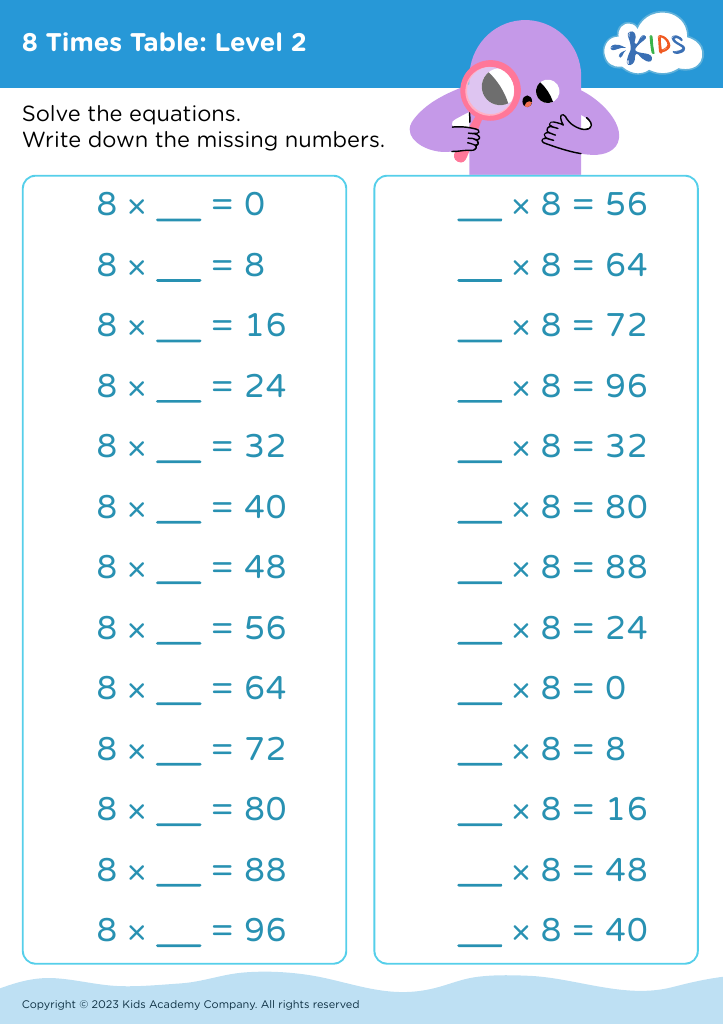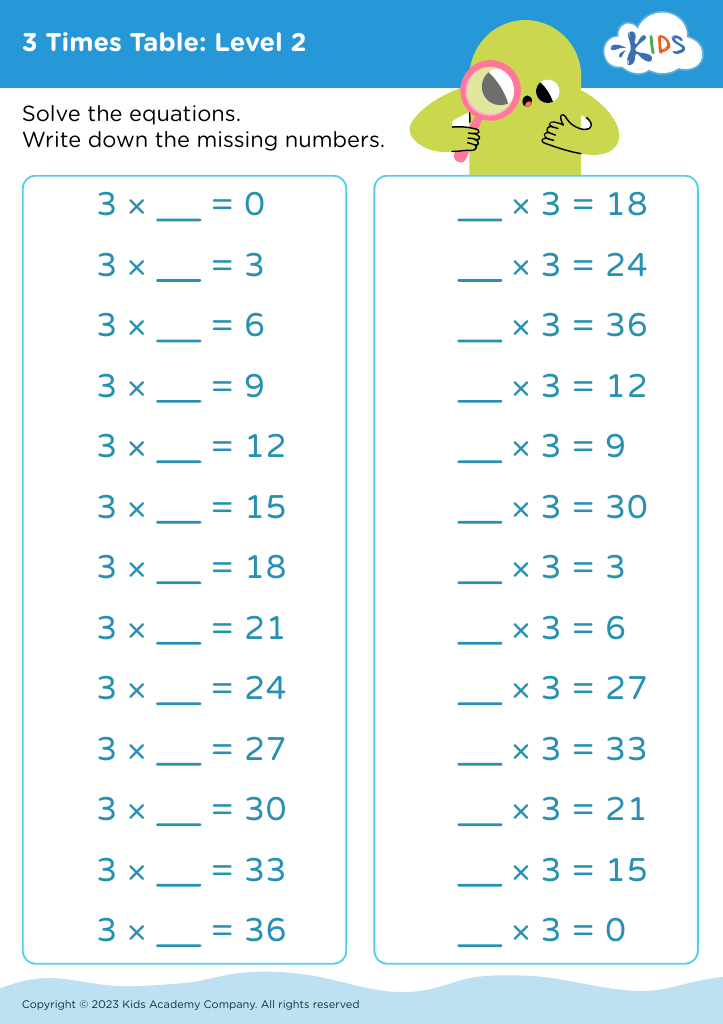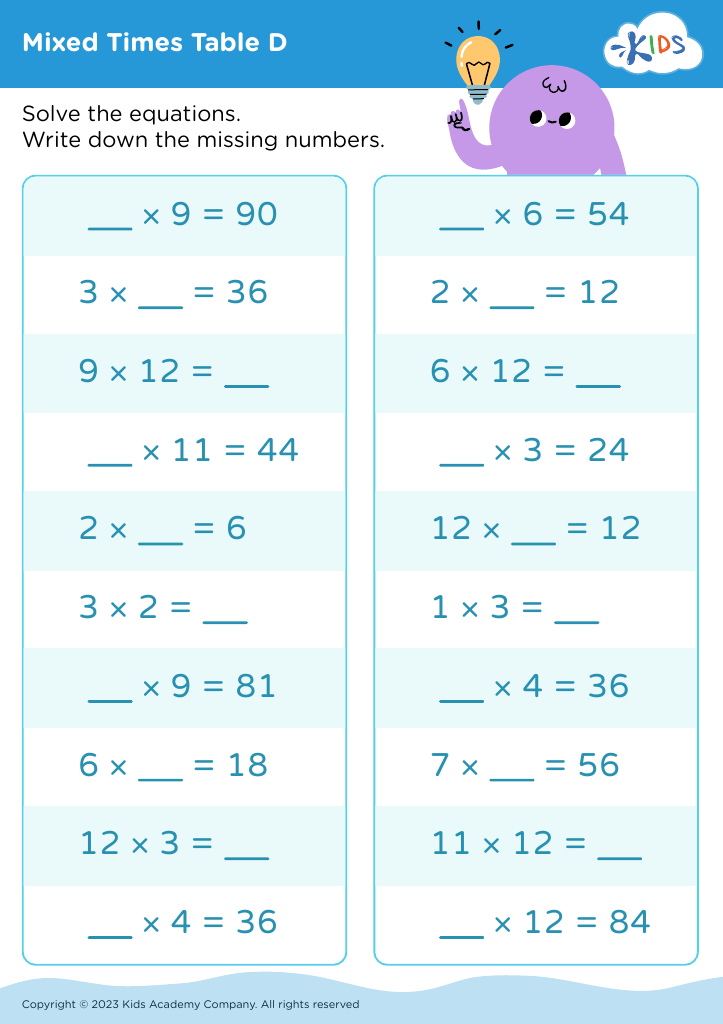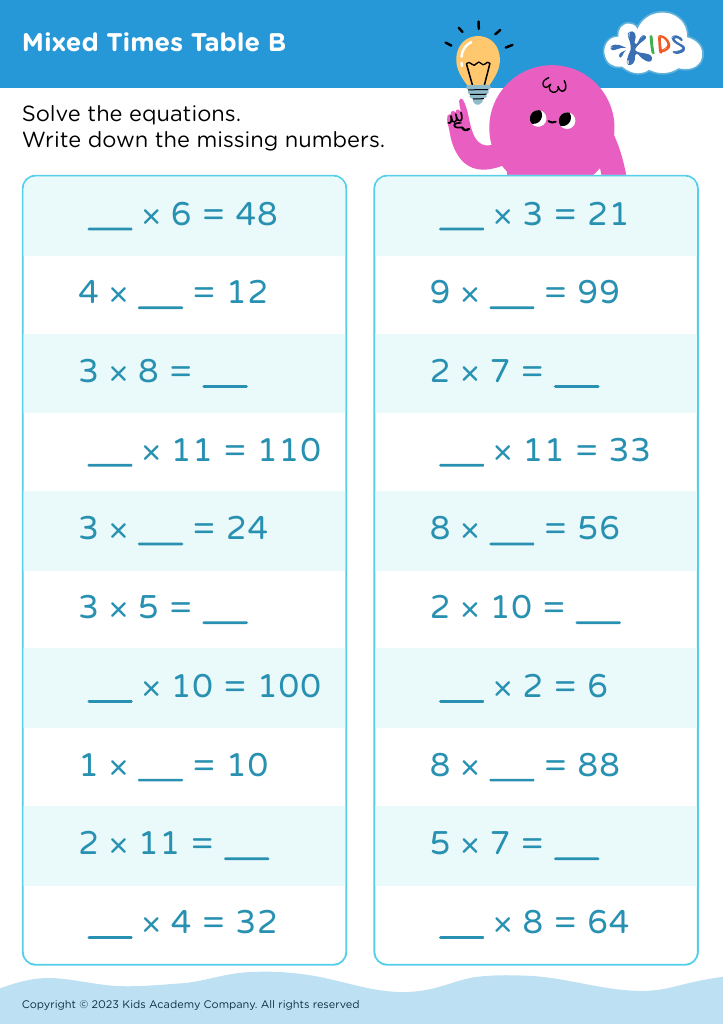Times table reinforcement Worksheets for Ages 7-9
4 filtered results
-
From - To
Enhance your child's math skills with our engaging Times Table Reinforcement Worksheets designed specifically for ages 7 to 9. These worksheets offer a fun and interactive way for children to practice multiplication concepts through a variety of activities. Our resources include visual aids, practice tables, and challenging exercises that cater to different learning styles. Designed by education experts, these worksheets aim to build fluency and confidence in multiplication. Perfect for home or classroom use, our materials help students grasp foundational math skills essential for their academic journey. Explore our collection today and support your child's growth in mathematics!
Reinforcing multiplication tables for children aged 7-9 is crucial for several reasons. First, this age group is typically beginning to transition from basic arithmetic to more complex math concepts. Mastering multiplication tables lays a foundational understanding of mathematics, enabling students to tackle division, fractions, and eventually algebra with confidence.
Moreover, proficiency in times tables fosters a child’s mental math skills, which enhances quick problem-solving abilities and bolsters mathematical fluency. These essential skills not only accompany academic success but also boost a child’s self-esteem and attitudes toward math, making them less prone to math anxiety.
Additionally, times tables serve as a building block for real-world applications, especially in areas like budgeting, cooking, and understanding units of measurement. Regular reinforcement through engaging activities can make learning enjoyable and memorable, allowing children to connect mathematical concepts to their everyday lives.
Lastly, involvement from both parents and teachers is vital, as collaborative reinforcement nurtures a strong support system. This combination fosters a love for learning and ensures that children develop a deep, lasting understanding of essential mathematical principles that will benefit them throughout their education.





















